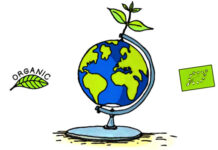Who buys organic in Italy and why. How the sales network has changed. New data on the great march of organic.
Female, 35-40 years old, children
under
12, upper middle income. And many others, finally. The elitist profile of the customer-types of organic ‘goldsmiths’ is now joined by a much larger audience of consumAtors who prefer organic for several very good reasons. Health
and animal welfare
,
food quality, supply chain integrity
, environmental protection.
Nomisma,
Federbio
e
Assobio
presented at the 2018 Sana Observatory, for Bologna Fiere, a consumer profile whose breadth and maturity is worth a closer look. The democratization of organic drives a growth in sales in Italy that continues by establishing, precisely, a broader market base (+6.5 percent in 2017, after a record 2016, +10 percent).
Organic, those who produce do not consume
According to the Observatory, which surveyed a sample of 600 households, 8 out of 10 households bought organic food at least once in 2017. Among them, 42% are regular organic buyers, at least weekly.
The geography of consumption Is similar to that of 2016. The pull is located in the North, where 60 percent of spending is concentrated (36.2 percent in the Northwest, 27.7 percent in the Northeast). The Center, which together with Sardinia accounts for 24.7 percent of the market, increased consumption by 0.3 percent, high in proportion to population. Instead, the South produces but does not consume. Here are the largest certified areas and productions and yet consumption remains low, while registering minimal growth (0.5 percent).
Organic, a rich man’s choice?
Level of education
and income affect the habituality of organic food choice, as has, moreover, already emerged
than the propensity to follow the Mediterranean diet. However, the price factor, in the beginning so high that organic is reserved for the wealthy, is an element of great dynamism.
The prices of organic products
have steadily declined in the
large sales areas. It begins to realize that democratization of organic From these pages long invoked. Relegating to the
boutiques
of organic the shopping destination of the
elite
.
Organic, the role of supermarkets and discount stores
Modern distribution in just a few years has assumed a crucial role in the sale of organic products. Not only because of the numbers (+2% in 2017) and the catchment area (44% of regular consumers, compared with 19% who instead go to specialty stores, -3.4%), but precisely because of the contribution to a calming effect on prices.
I
discount stores
continue to reap success. Their market share increased by 1.4 percent to 6 percent of organic food sales. Discount stores have already overtaken specialty stores in three categories of organic food:
– fresh eggs (9.5% vs. 0.8%),
– vegetable oils and fats (10.5 percent, four times more than specialty stores, 2.6 percent),
– grains and cereal products (11.2 percent, compared with 5.9 percent for organic boutiques ).
The most popular organic
With a total volume
of sales amounting to 3.552 billion euros (5.612, including exports), organic consumption
accounted for 3 percent of agribusiness consumption in the first half of 2018 (it was 2.8 percent in the same period of 2017).
Fruits and vegetables, according to Ismea data, remain the best-selling foods. This is followed by cereals and derivatives (pasta, flours, rice), milk and derivatives(yogurt
first and foremost
)
, eggs, and soft drinks (such as fruit juices).
Honey and eggs
grow
in full swing. Where organic accounts for 14.5 and 13.2 percent of total sales, respectively. The propensity to spend a little more to get the added value of the organic version Of foods that are already relatively inexpensive in themselves.
Professional journalist since January 1995, he has worked for newspapers (Il Messaggero, Paese Sera, La Stampa) and periodicals (NumeroUno, Il Salvagente). She is the author of journalistic surveys on food, she has published the book "Reading labels to know what we eat".








